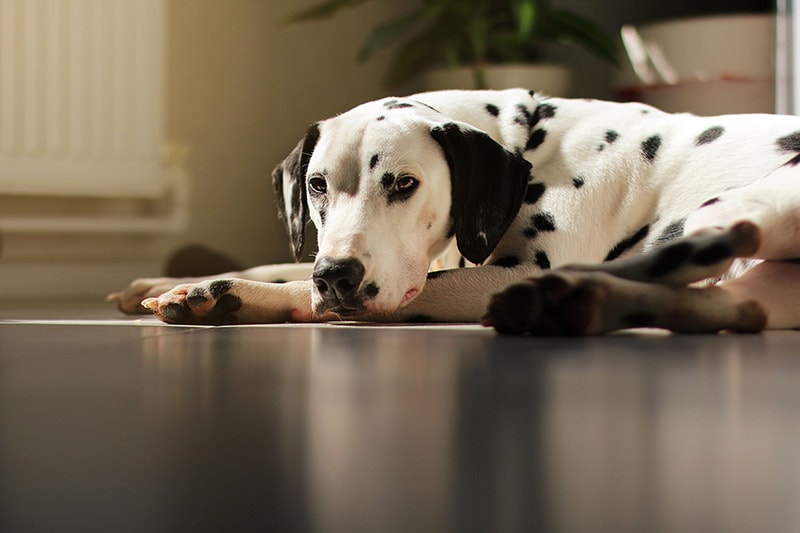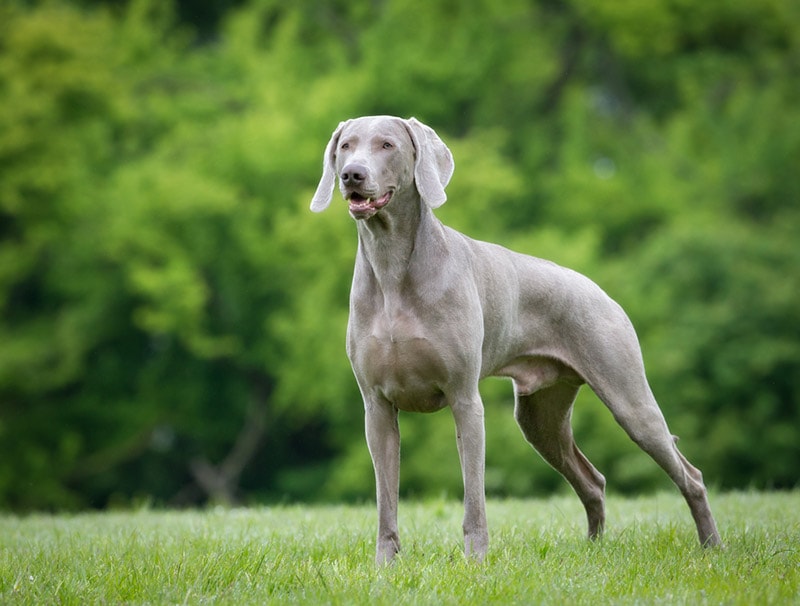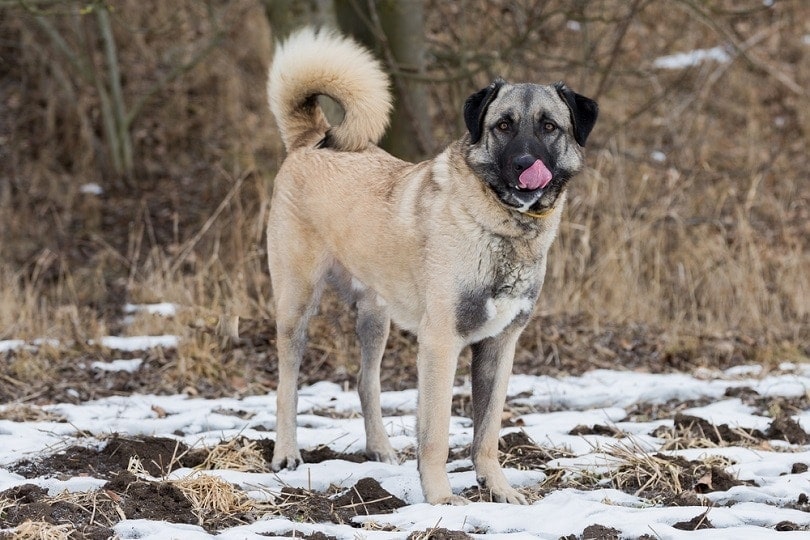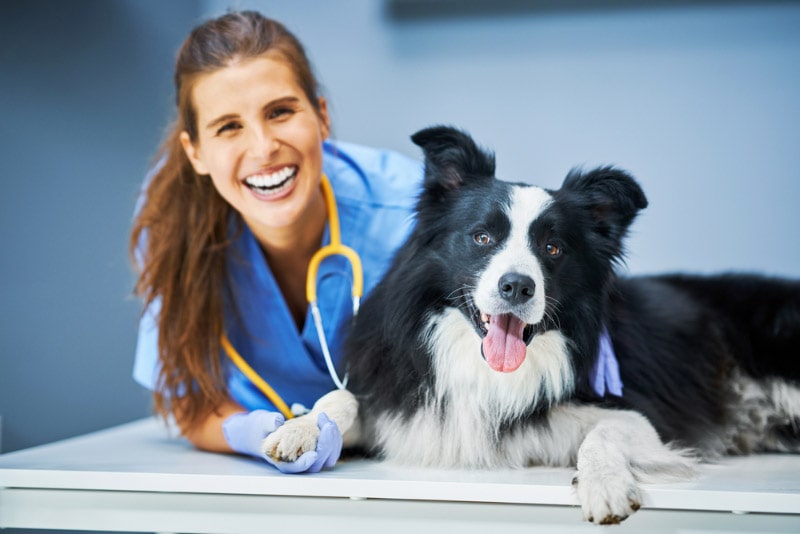19 Worst Dog Breeds for First-Time Owners: Traits Explained (With Pictures)
Updated on

For a first-time dog owner, searching for the perfect breed is a very exciting time. It’s incredibly important to find a dog that is compatible not only with your lifestyle but also with your experience level. While there are plenty of breeds that make great choices for first-time owners, there are also those that are not going to be ideal for someone without experience.
While all dog breeds have some truly wonderful qualities, we’re going to go over the dog breeds that aren’t going to be suitable for first-time owners and discuss the reasons why they made the list.
The 19 Worst Dog Breeds for First-Time Owners
1. Belgian Malinois

| Origin: | Belgium |
| Lifespan: | 14–16 years |
| Height: | 23–27 inches |
| Weight: | 40–80 pounds |
Originally bred as herding dogs, the Belgian Malinois is an impressive breed with a drive that goes unmatched. These dogs require a highly skilled and experienced trainer and need a job to do. Their keen intelligence, coupled with their unparalleled athleticism, has led the breed to many duties within law enforcement and military work.
It takes a considerable amount of experience to train and handle a Malinois. They require a great deal of both physical activity and mental stimulation and most people are not capable of meeting their extensive needs. While they have incredible qualities, these fur missiles are not suitable for first-time owners or even pet-only homes.
2. Rottweiler

| Origin: | Germany |
| Lifespan: | 9–10 years |
| Height: | 22–27 inches |
| Weight: | 80–135 pounds |
The Rottweiler is a large, intelligent, and powerful breed with a very strong instinct for protection. While they were originally bred to herd livestock and pull carts, they are now commonly used as personal protection dogs and for military work.
The Rottweiler’s size alone can be very overwhelming for a first-time dog owner, but they are also very strong-willed and have a reputation for aggression when not properly trained and socialized. This is a lot of dog to handle and since they require a firm, confident, experienced handler, they are never recommended for brand-new dog owners.
3. Siberian Husky

| Origin: | Germany |
| Lifespan: | 12–14 years |
| Height: | 20–23.5 inches |
| Weight: | 35–60 pounds |
The Siberian Husky is an incredibly popular breed that you see frequently. While their beauty and grace can certainly pique any dog lover’s interest, it’s important to know that these dogs are not well-suited for inexperienced owners. Huskies are high-energy working dogs, most commonly used for sled pulling, and are built for frigid temperatures.
Known to pull sleds for up to 100 miles in 24 hours, these dogs have incredible endurance and can literally run all day. It’s very difficult to meet their intense exercise and mental stimulation needs, and they are often destructive when those needs aren’t met.
Huskies have a very high prey drive and aren’t the ideal breed for a home with small animals like cats. They are also well known for being escape artists and will stop at nothing to explore. In addition, they have a terrible recall so they should never be allowed off-leash. Overall, they are not a good choice for first-time owners.
4. American Pitbull Terrier

| Origin: | United States |
| Lifespan: | 12–16 years |
| Height: | 17–19 inches |
| Weight: | 40–70 pounds |
The American Pitbull Terrier is another very popular breed in the United States and has among the most notorious reputations of any dog breed. Pitbulls were originally bred for blood sports, such as bull baiting and dog fighting, and while they can be sweet and lovable companions, we would never recommend them for first-time owners.
Having been bred specifically for fighting, these dogs require an experienced owner that can train and socialize them properly. Without proper, consistent training and socialization they can be likely to exhibit aggression towards dogs and other animals.
Because of their reputation, even if it’s misguided, most homeowner’s insurance companies require extra coverage to those with Pitbulls and other breeds with aggressive tendencies and many landlords do not allow these dogs in rental properties, which can be very difficult for owners to find housing.
5. Cane Corso

| Origin: | Italy |
| Lifespan: | 9–12 years |
| Height: | 23.5–27.5inches |
| Weight: | 90–110+ pounds |
The Cane Corso breed has gained traction recently and has become one of the most highly desired guard dog breeds. While these big, lovable mastiffs can make great companions, they are not suited for everyone. Descended from Roman war dogs, the Cane Corso has incredible strength and athleticism.
They were initially bred to protect livestock and property, so they have a strong protective nature. They are incredibly intelligent, but they are also very strong-willed and can be quite challenging – not to mention they can easily overpower you. They require an experienced, firm leader that can properly train and socialize them.
6. Border Collie

| Origin: | United Kingdom |
| Lifespan: | 10–15 years |
| Height: | 18–22 inches |
| Weight: | 30–55 pounds |
Border Collies are among the most intelligent, fascinating dog breeds, but with that intelligence comes a need for mental stimulation that’s hard to match. They also come with loads of energy, so not only is it hard to keep their minds stimulated, but it’s also challenging for most dog owners to meet their intense exercise needs.
These dogs got their beginning in the United Kingdom as livestock herders, and while they are known for their lovable nature, friendly personalities, and adaptability, they can be prone to nipping due to those natural herding instincts. Overall, this breed would be a bit much for a first-time dog owner so we would recommend going with a more appropriate breed.
- Related Read: Best Dog Foods for Border Collies – Reviews & Top Picks
7. Dalmatian

| Origin: | Croatia |
| Lifespan: | 11–13 years |
| Height: | 19–24 inches |
| Weight: | 45–70 pounds |
Many are surprised to learn that the adorable Dalmatian, which got notoriety when Disney came out with the classic hit, 101 Dalmatians, doesn’t make the best dog for inexperienced owners. They were bred to trot alongside horse-drawn carriages and protect them from potential threats.
These dogs are unique, beautiful and have some wonderful qualities, but they are independent thinkers with an intense stubborn streak, so they require an experienced handler. Dalmatians are also prone to several genetic health conditions such as urinary tract issues, deafness, and eye problems. All things considered; they just aren’t ideal for someone who has never owned a dog.
8. Chow Chow

| Origin: | China |
| Lifespan: | 8–12 years |
| Height: | 17–20 inches |
| Weight: | 45–70 pounds |
The Chow Chow is an ancient Chinese breed that is used for multiple purposes, including sled pulling, hunting, and guarding livestock and property. They are not only physically strong but also strong-willed and often incredibly stubborn.
Chows have strong territorial tendencies and are prone to aggression if not properly socialized and trained. They are not a breed meant for novice owners, as they require a firm leader that has experience with the breed.
9. German Shepherd

| Origin: | Turkey |
| Lifespan: | 11–13 years |
| Height: | 27–29 inches |
| Weight: | 80–150 pounds |
The German Shepherd always has a high place among the AKC’s list of most popular dog breeds in America. They have some wonderful qualities and can make excellent companions, but they are best suited for someone with a little more experience.
There’s a reason why German Shepherds excel in police work, military operations, and many other job duties. They are athletic, intelligent, naturally protective, and built to work – but a dog with these qualities can also be a lot of work and are best suited for more experienced dog owners.
10. Weimaraner

| Origin: | Germany |
| Lifespan: | 10–13 years |
| Height: | 23–27 inches |
| Weight: | 55–90 pounds |
The Weimaraner is a stunningly beautiful hunting breed that originated in Germany. These dogs can make fantastic companions for compatible owners, but we don’t recommend them for beginners for a couple of reasons.
First of all, the Weimaraner has some serious exercise needs, requiring a minimum of 2 hours every day. Their keen intelligence also comes with a need for some serious mental stimulation, and if they aren’t kept occupied it can lead to destructive behaviors such as chewing, digging, and counter-surfing.
While they pick up on training well, they have an independent streak that can make training more of a challenge. This is simply a breed that is better suited for someone with experience that is prepared to meet their needs.
11. Shar Pei

| Origin: | China |
| Lifespan: | 8–12 years |
| Height: | 24–28 inches |
| Weight: | 45–60 pounds |
Originating in ancient China, the Shar Pei was developed as a guard dog but was also used in the fighting ring. This unique breed has some specific needs and is not suitable for a first-time dog owner or any family looking for a low-maintenance family pet.
While bred to be loyal, they are also territorial and may not do well with strangers, small children, or other animals. They require extensive training and socialization and do their best with experienced handlers. They are also prone to quite a few health conditions and their wrinkly skin requires a lot of upkeep.
12. Doberman Pinscher

| Origin: | Germany |
| Lifespan: | 10–12 years |
| Height: | 24–28 inches |
| Weight: | 60–100 pounds |
The Doberman is a lean, athletic, impressive dog breed that was developed in Germany as a protection dog. They excel in law enforcement, military duties, and protection work because of their intelligence, stamina, and trainability. It’s easy to underestimate just how much time and commitment a Doberman truly needs, though.
While a wonderful breed, we don’t recommend them for novice owners because they are highly energetic and have considerable requirements for both exercise and mental stimulation. They are also prone to separation anxiety, which can be difficult to remedy. Overall, they are best suited for those that have prior experience.
13. Akita

| Origin: | Japan |
| Lifespan: | 10–14 years |
| Height: | 24–28 inches |
| Weight: | 70–130 pounds |
The large, powerful Akita was developed in Japan and was originally used for guarding, hunting, and herding. They are fearless, independent, and strong-willed, and can be quite a challenge to train. They have some serious territorial tendencies and can be prone to aggression if not trained and socialized properly.
Akitas are notorious for not getting along well with other dogs, and while they may look like cuddly teddy bears, they also have a considerable amount of energy and require at least 1 to 2 hours of exercise each day. All of these qualities are best handled by an owner with skill and experience.
14. Australian Cattle Dog

| Origin: | Australia |
| Lifespan: | 12–16 years |
| Height: | 17–20 inches |
| Weight: | 35–50 pounds |
The Australian Cattle Dog, also known as the Red or Blue Heeler, is a livestock herding breed that is highly independent and energetic. They are dogs that thrive on having a job to do as opposed to being laid-back house pets. Their herding dog tendencies also result in their predisposition to nipping and trying to herd anyone and anything.
These dogs require a firm hand and can be a challenge to train and stimulate. While they can do great with a compatible owner, we would never recommend them to first-timers because they could be a bit too much for someone that lacks experience with dogs.
15. Alaskan Malamute

| Origin: | Alaska |
| Lifespan: | 10–14 years |
| Height: | 23–25 inches |
| Weight: | 75–85 pounds |
Like the Siberian Husky, the Alaskan Malamute is also not an ideal dog breed for brand-new dog owners. They are incredibly headstrong, can be difficult to train, and tend to pull on a leash, so they need a strong leader that knows how to handle them.
Also similar to the Husky, they also have a strong prey drive and aren’t ideal around smaller animals. The Alaskan Malamute typically doesn’t do well with other dogs, either, especially with dogs of the same sex.
They are also a breed with terrible recall and should never be allowed off-leash. The breed will go to great lengths to escape their homes and yards to explore the world around them. Malamutes truly require a compatible family and would not be recommended as someone’s first dog.
16. Vizsla

| Origin: | Hungary |
| Lifespan: | 12–14 years |
| Height: | 21–24 inches |
| Weight: | 44–60 pounds |
The Vizsla is a gundog of Hungarian origin that was built for long days on the hunt alongside its handler. They are athletic, energetic, and have a lot of stamina for long days spent on rugged terrain.
These dogs are high-energy and intelligent, requiring a considerable amount of both exercise and mental stimulation. When their energy is not directed properly or they become bored, the breed can be very destructive. While they do form strong bonds with their people and are eager to please, they are best suited for owners with skills and experience.
17. Anatolian Shepherd

| Origin: | Turkey |
| Lifespan: | 11–13 years |
| Height: | 27–29 inches |
| Weight: | 80–150 pounds |
The Anatolian Shepherd is a large, powerful working dog that was bred to protect livestock. Like most livestock guardians, they are independent and prone to being territorial. They weren’t built for house dog duty and to this day are still best suited to protect livestock.
Their innate protective nature makes these dogs very wary of strangers, so socialization and training are incredibly important. However, they have some strong stubborn tendencies that make them quite the challenge to train, so they are not a breed recommended for first-time owners.
18. Presa Canario

| Origin: | Canary Islands |
| Lifespan: | 9–11 years |
| Height: | 22–26 inches |
| Weight: | 84–110 pounds |
The muscular and robust Presa Canario is a guardian by nature with a fierce protective instinct. They are not an AKC registered breed but are currently part of their Foundation Stock Service.
The size and power of this dog alone can be overwhelming, but considering their strong-willed nature, this breed would never be recommended to a first-time owner. The Presa is not a breed that is recommended for families with small children, and they often don’t do well with other dogs.
This formidable breed should only be placed with skilled, experienced dog handlers that are prepared for the intense training and socialization they need.
19. Caucasian Shepherd

| Origin: | Caucasus Region |
| Lifespan: | 10–12 years |
| Height: | 23–30 inches |
| Weight: | 99–170 pounds |
The Caucasian Shepherd is a massive livestock guardian dog native to the countries of the Caucasus region. Also known as the Caucasian Ovcharka, the breed is known for being fierce, fearless, and dominant.
Though the breed is not nearly as popular in the United States when compared to others on the list, they have made it to the AKC’s Foundation Stock Service. Considering their size, strength, and need for a firm, experienced handler, they aren’t a breed that first-time dog owners should consider.
How Are the Worst Dog Breeds for First-Time Owners Classified?
Dogs were domesticated and then selectively bred over the years to have certain physical features and serve specific purposes. When determining which of the breeds aren’t suitable for novice owners, we take the following into consideration:
Temperament
A dog’s temperament is very important for owner compatibility regardless of their experience level, but certain traits can make a breed less suitable for first-time owners. Dogs that are independent, stubborn, and willful typically aren’t well suited for beginners. As a novice dog owner, you also want to avoid taking on any breeds that may be prone to aggression, strong territorial instincts, and high work or prey drive.
Trainability
The vast majority of first-time dog owners are not going to have experience training a dog. There are some breeds that are going to be inherently difficult to train and require a firm, knowledgeable leader with skills that can only come with experience.
Energy Level
Dogs with high energy levels can be very overwhelming and downright incompatible with some people. Some breeds have extensive exercise needs that are difficult to meet, and many of these dogs also need lots of mental stimulation. Taking on a dog with high energy is no small feat and is often not recommended for first timers.
Breed Purpose
A breed’s purpose plays a large role in their physical characteristics as well as their overall temperament and trainability. You’ll notice that dogs originally bred for purposes such as hunting, guarding, herding, and blood sport will make up the majority of the list.
Size
Size doesn’t always determine whether a dog is suitable for a first-time owner, but large, powerful dogs can be a lot for a beginner to handle. It’s easy for larger breeds to overpower someone that doesn’t have training experience. So, if a breed is large and exhibits certain traits such as a strong will, stubbornness, and difficulty training, they should be placed with experienced owners.
Health Conditions/Care Requirements
There are certain health conditions and care requirements that may make one dog breed more difficult to own than another. While these may be easier to prepare for, if a breed falls into the categories above and also has certain genetic health conditions or more high-maintenance care needs, first-time owners may want to consider another option for their first pup.

Conclusion
Always do your research when searching for the right dog breed and make sure they are compatible with your lifestyle and experience level. Many dog breeds are best suited for owners with more knowledge and experience, and while it can be disheartening if your breed of choice makes the list, it’s very important to understand the reasons why and to make the best decision for both you and the dog.
Featured Image Credit: Anna Kumpan, Unsplash











